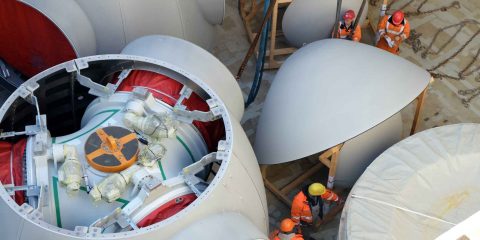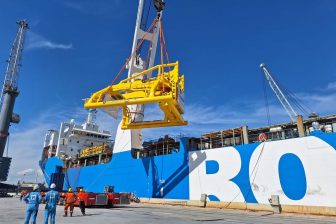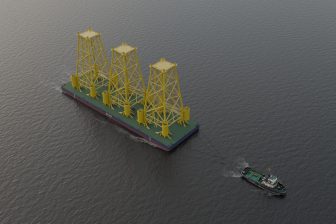
IEA: Corona crisis threatens to derail renewables growth
2020 was forecasted to be a record year for the renewables industry but without government action, the corona crisis could considerably disrupt its momentum, warns the International Energy Agency (IEA). In Europe, wind turbine manufacturers have already closed 18 factories in response to national measures.
The wind industry faces three main challenges, says the IEA. Supply chain disruptions that can lead to delays, risk of being unable to benefit from government incentives that end this year, and the likely decrease in investment because of pressure on public and private budgets.
Europe is a major manufacturing hub for wind turbines but strict confinement measures have forced European manufactures to close their facilities in Spain and Italy since mid-March. According to WindEurope, a total of 18 factories have been closed, including facilities of leading manufacturers like Siemens Gamesa, Vestas, Nordex and GE-owned LM Wind Power.
Additionally, a number of onshore construction sites in Scotland have come to a standstill and Atlantique Offshore Energy has halted the construction of the electrical substation for the Saint-Nazaire offshore wind farm. Meanwhile, the recent lockdown in India required wind turbine and solar PV component manufacturers to close until mid-April.
“The effects of this are already being felt in the United States where multiple projects have received “force majeure” notices from suppliers warning developers about possible delivery delays”, says Heymi Bahar, senior analyst Renewable Energy Markets and Policy at IEA.
Financial risks
He warns that the pandemic is slowing down construction activity as lockdown measures in multiple European countries, India and some US states require non-essential workers to stay at home. This hurts developers who need to complete utility-scale projects by the end of 2020 in order to receive major financial incentives, Bahar says.
For example, in China, all wind projects need to be commissioned by the end of 2020 in order to qualify for feed-in tariff subsidies, while in the US, wind developers are required to ensure projects are operational by 2020 to receive production tax credits. “Any delay in components or construction puts companies at risk of missing these deadlines and thus important financial incentives”, Bahar explains.
Large developers may be able to handle these delays and additional costs but for smaller project developers with less cash at their disposal, the situation remains more uncertain.
Signs of caution
The situation is not nearly as bad as in the oil industry. Wind turbine manufacturers are still announcing new contracts, Nordex reported a 59% increase of firm orders in the first quarter of 2020 and many EU member states have proven that auctions can still take place. Nevertheless, increasing signs of caution can be observed.
Vattenfall last week announced that it has decided not to bid on the 700 MW Hollandse Kust Noord wind farm because of the uncertainty caused by the coronavirus. The company would rather focus on existing facilities and projects that are currently under development, a spokesperson told Dutch reporters. The Hollandse Kust Noord wind farm would require an estimated EUR 1.4 billion in investment.
Vestas yesterday withdrew its guidance for 2020. The manufacturer said that so far the impact has been limited and the outlook for 2020 is still realistic, but because there is no longer adequate visibility for the rest of the year, the company can not confidently give guidance on its full-year performance.
“Definitely, we saw the situation worsening in the past weeks”, says spokesperson Christoph Zipf of WindEurope. “Border controls are hampering the movement of goods across Europe and some countries went so far as to shutdown parts of their “non-essential” production. Some countries such as Scotland have also advised for construction works to pause, as social distancing rules cannot always be applied. But our members are still positive to realise a fair share of active projects in time.”
Governments urged to take action
Organizations are now urging governments to take action to prevent the industry from derailing. WindEurope has called on national governments to allow for essential manufacturing processes to continue, in particular for the production of components without which global wind energy supply chains will grind to a halt.
Bahar pleads for the extension of deadlines for commissioning projects beyond 2020, in order to account for delays due to supply chain disruptions or labour constraints and help developers avoid financial penalties. He also pleads for specific financing measures and incentives for renewable projects in upcoming stimulus packages. Without such actions, the growth of renewable capacity additions this year may very well slow down for the first time in history, he says.
You just read one of our premium articles free of charge
Register now to keep reading premium articles.




